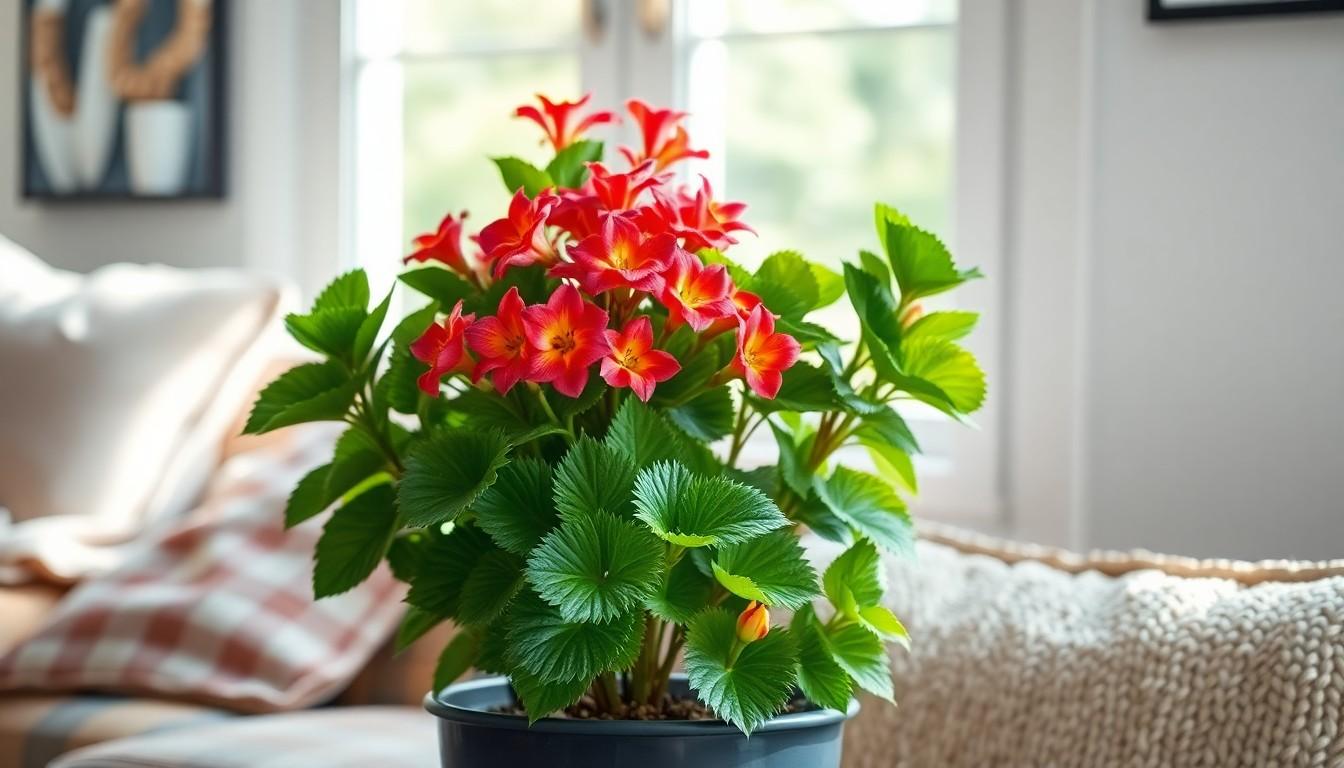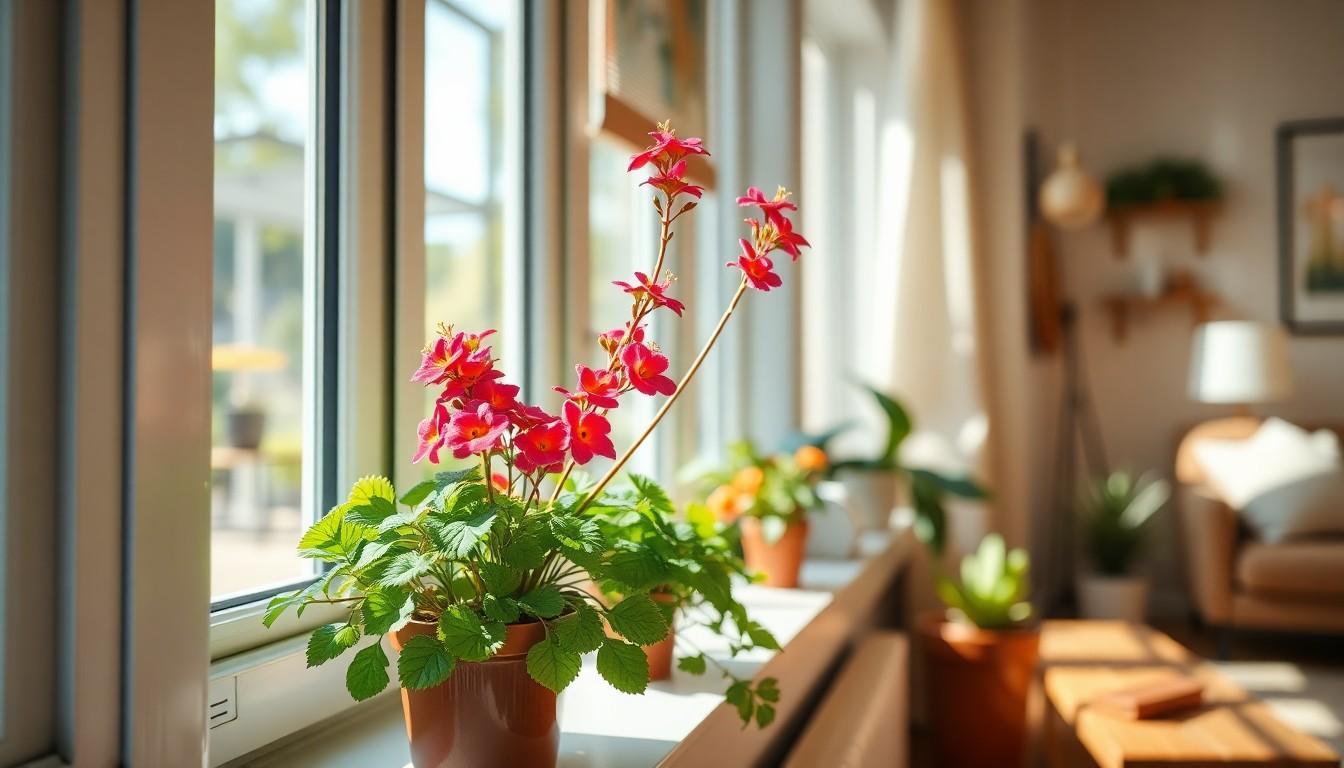If you’re looking to add a splash of color to your indoor space, the kalanchoe plant might just be your new best friend. These vibrant succulents not only brighten up any room but also come with the added bonus of being low-maintenance. That’s right—no green thumb required! With a little love and the right care, these beauties can thrive indoors, making them perfect for busy plant parents or anyone who’s ever accidentally turned a cactus into compost.
But before you rush off to the nearest nursery, it’s essential to learn the ins and outs of kalanchoe care. From sunlight needs to watering schedules, understanding what makes this plant tick will ensure it flourishes in your home. So grab your gardening gloves and get ready to impress your friends with your newfound plant-parenting skills—because who doesn’t want to be the proud owner of a thriving kalanchoe?
Overview Of Kalanchoe Plant Care Indoors
Kalanchoe plants thrive indoors with proper care and attention. Light exposure plays a critical role in their growth, requiring bright, indirect sunlight. Position these plants near a window with filtered light to prevent leaf scorching.
Watering practices significantly influence kalanchoe health. Allow the top inch of the soil to dry out before watering, ensuring the roots do not sit in moisture. During the growing season, provide water about once a week. In winter, reduce watering frequency, as the plant enters dormancy.
Temperature control is essential for kalanchoe. Keep indoor temperatures between 60°F and 75°F. Avoid cold drafts and sudden temperature changes, as these can stress the plant.
Fertilization supports optimal growth. Use a balanced, water-soluble fertilizer every 4 to 6 weeks during the growing season. Avoid fertilizing during dormancy, as this can lead to nutrient burn.
Pest management is vital for maintaining plant health. Frequently inspect kalanchoe for common pests like aphids and mealybugs. If pests appear, treat them with insecticidal soap or neem oil.
Repotting may become necessary as kalanchoe matures. Choose a pot that allows for good drainage and fresh potting mix. Repot every 1 to 2 years or when roots outgrow the container.
Regularly pruning dead or wilted leaves promotes overall health and encourages new growth. This routine care enhances the plant’s appearance.
Kalanchoe care requires attention, but the vibrant blooms and lush foliage reward the effort. Understanding specific light, water, and temperature requirements enhances a successful indoor gardening experience.
Ideal Growing Conditions

Kalanchoe thrives indoors when provided with the right conditions. Proper light, temperature, and humidity are essential for optimal growth.
Light Requirements
Bright, indirect sunlight maintains kalanchoe’s health. Ideally, place the plant near a window with filtered light. Exposure to direct sunlight can scorch leaves, so avoid this situation. During winter months, more light becomes crucial as days shorten. On cloudy days, consider supplementing with grow lights for about 12 to 14 hours. Checking for signs of insufficient light, like leggy growth, helps assess its needs.
Temperature and Humidity
Kalanchoe prefers temperatures between 60°F and 75°F. Keeping it away from cold drafts and heating vents prevents stress. Sudden temperature fluctuations can negatively impact the plant’s growth. Humidity levels between 40% and 60% suit kalanchoe well. Using a humidity tray or misting occasionally can help maintain appropriate moisture levels. High humidity isn’t necessary, as kalanchoe is drought-tolerant. Regularly monitoring these factors promotes healthy, vibrant plants indoors.
Watering And Feeding
Proper watering and feeding practices enhance kalanchoe plant health. Understanding these needs ensures vibrant growth and longevity.
Watering Schedule
A consistent watering schedule supports kalanchoe vitality. Water only when the top inch of soil dries out. During the growing season, aim for once a week. Less frequent watering is necessary in winter months. Adjustments depend on humidity and temperature. Additionally, overwatering can lead to root rot, so monitor soil moisture closely. Ensuring good drainage prevents excess water accumulation and promotes root health.
Fertilization Tips
Fertilizing kalanchoe every 4 to 6 weeks during the growing season encourages robust growth. Opt for a balanced, water-soluble fertilizer with equal ratios of nitrogen, phosphorus, and potassium. Dilute the fertilizer to half strength before application to prevent burning the roots. Avoid fertilizing during the winter months as the plant enters dormancy. Regular feeding during the active growth phase supports blooming and enhances foliage quality.
Pruning And Propagation
Pruning and propagation play vital roles in kalanchoe plant care. Effective pruning promotes healthy growth and vibrant blooms.
Pruning Techniques
Regular pruning enhances kalanchoe’s appearance and health. Remove dead, wilted leaves to prevent disease and encourage new growth. Cutting back leggy stems fosters a bushier form. Pruning should occur after blooming, allowing the plant to focus energy on new foliage. Use clean, sharp scissors to make precise cuts, minimizing damage to the plant. Timing the pruning during the active growing season supports recovery and vitality.
Propagation Methods
Kalanchoe propagation is straightforward, making it accessible for gardeners. Leaf cuttings provide a common method, where a healthy leaf is cut and allowed to dry for a few days before placing it in well-draining soil. Offsets, or pups, can also be separated from the main plant, enabling new growth. Watering these new plants sparingly for the first few weeks encourages strong root development. Successful propagation not only expands the collection but also fosters a rewarding gardening experience.
Common Pests And Diseases
Kalanchoe plants can face various pests and diseases that may affect their health. Identifying these issues early ensures effective management.
Identifying Infestations
Look for signs of common pests such as aphids, mealybugs, and spider mites. Aphids appear as small green or black insects clustered on leaves. Mealybugs often leave a white, cottony residue on stems and leaf joints. Spider mites produce fine webbing, especially on the undersides of leaves. Checking for discoloration, wilting, or stunted growth also helps detect infestations. Regular inspections facilitate early identification, ensuring that any pest issues do not escalate.
Treatment Solutions
Using insecticidal soap can effectively address an infestation. This eco-friendly option targets various pests without harming the kalanchoe. Another method involves pruning affected parts to limit pest spread. For severe cases, applying neem oil serves as a natural insect repellent and fungicide. Lastly, maintaining proper care routines strengthens the plant’s resilience against bugs and diseases. Regular cleaning of leaves helps prevent pest buildup, promoting overall kalanchoe health.
Conclusion
Caring for a kalanchoe plant indoors can be a rewarding experience that brings vibrant color to any space. By understanding its specific needs for light temperature and watering, anyone can cultivate a thriving plant. Regular pruning and pest management further enhance its health and appearance.
With a little attention and the right techniques, the kalanchoe can flourish and bloom beautifully. This low-maintenance plant not only adds aesthetic value but also provides a sense of accomplishment for indoor gardeners. Embracing the journey of kalanchoe care can transform any home into a lively green sanctuary.

